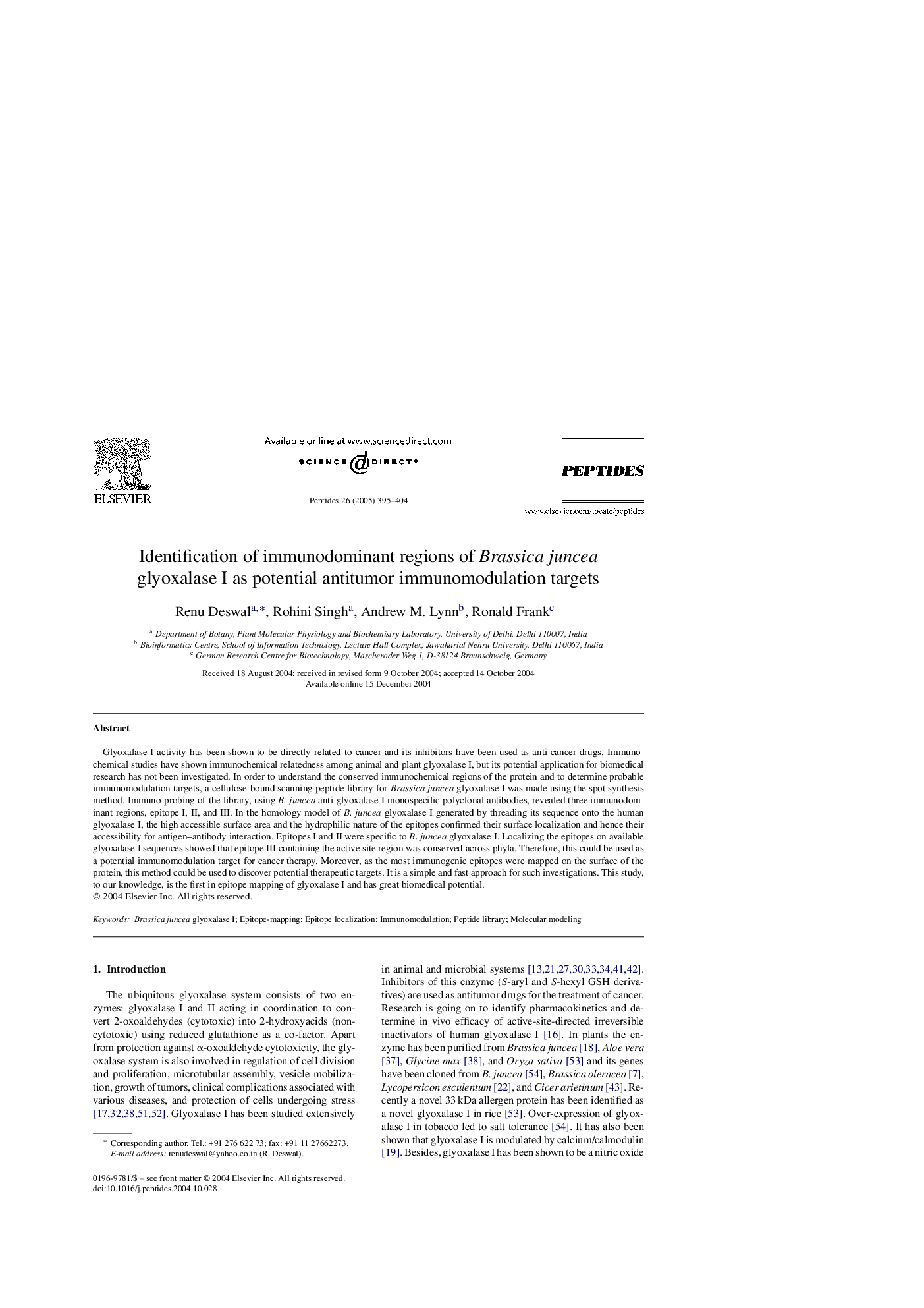| Article ID | Journal | Published Year | Pages | File Type |
|---|---|---|---|---|
| 10836961 | Peptides | 2005 | 10 Pages |
Abstract
Glyoxalase I activity has been shown to be directly related to cancer and its inhibitors have been used as anti-cancer drugs. Immunochemical studies have shown immunochemical relatedness among animal and plant glyoxalase I, but its potential application for biomedical research has not been investigated. In order to understand the conserved immunochemical regions of the protein and to determine probable immunomodulation targets, a cellulose-bound scanning peptide library for Brassica juncea glyoxalase I was made using the spot synthesis method. Immuno-probing of the library, using B. juncea anti-glyoxalase I monospecific polyclonal antibodies, revealed three immunodominant regions, epitope I, II, and III. In the homology model of B. juncea glyoxalase I generated by threading its sequence onto the human glyoxalase I, the high accessible surface area and the hydrophilic nature of the epitopes confirmed their surface localization and hence their accessibility for antigen-antibody interaction. Epitopes I and II were specific to B. juncea glyoxalase I. Localizing the epitopes on available glyoxalase I sequences showed that epitope III containing the active site region was conserved across phyla. Therefore, this could be used as a potential immunomodulation target for cancer therapy. Moreover, as the most immunogenic epitopes were mapped on the surface of the protein, this method could be used to discover potential therapeutic targets. It is a simple and fast approach for such investigations. This study, to our knowledge, is the first in epitope mapping of glyoxalase I and has great biomedical potential.
Related Topics
Life Sciences
Biochemistry, Genetics and Molecular Biology
Biochemistry
Authors
Renu Deswal, Rohini Singh, Andrew M. Lynn, Ronald Frank,
